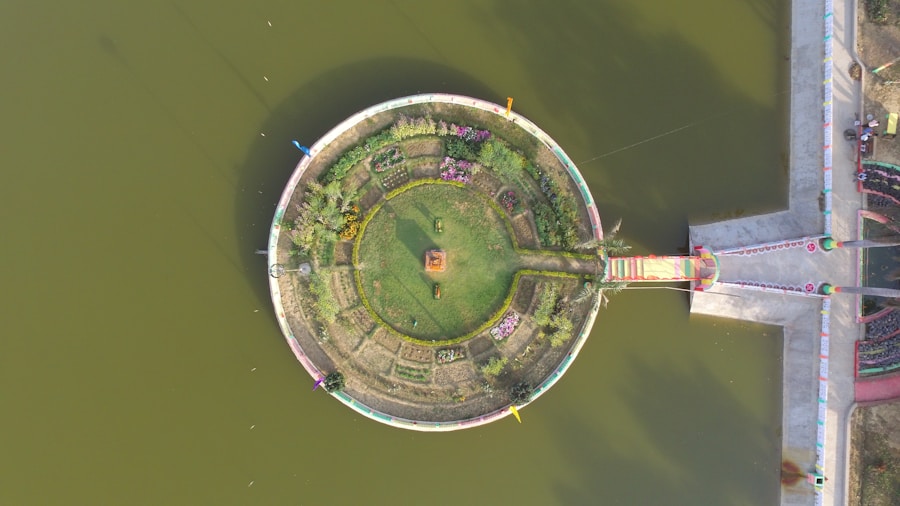The Niantic Metaverse represents a groundbreaking evolution in the realm of augmented reality (AR) and location-based experiences. At its core, it is an expansive digital universe that overlays virtual elements onto the real world, allowing users to interact with both their physical environment and digital content in a seamless manner. Niantic, the company behind this innovative concept, is best known for its hit mobile game Pokémon GO, which successfully integrated AR with real-world exploration.
The Niantic Metaverse builds upon this foundation, aiming to create a persistent, shared space where users can engage with digital objects, characters, and experiences that are anchored to specific locations in the real world. This metaverse is not merely a collection of games or applications; it is envisioned as a comprehensive ecosystem that fosters social interaction, creativity, and exploration. By leveraging the power of AR technology, Niantic seeks to encourage users to step outside their homes and engage with their surroundings in new and exciting ways.
The Niantic Metaverse is designed to be a platform where developers can create their own experiences, contributing to a rich tapestry of user-generated content that enhances the overall experience for everyone involved. This collaborative approach is central to Niantic’s vision, as it aims to create a vibrant community of users who can share their adventures and discoveries within this augmented landscape.
Key Takeaways
- The Niantic Metaverse is a digital universe that combines the physical and virtual worlds through augmented reality technology.
- The technology behind the Niantic Metaverse includes advanced mapping, computer vision, and machine learning to create immersive experiences.
- Niantic Metaverse offers both virtual reality experiences, where users are fully immersed in a digital environment, and augmented reality experiences, where digital elements are overlaid onto the real world.
- Niantic Metaverse provides gaming and entertainment experiences that encourage physical activity and exploration of real-world locations.
- The Niantic Metaverse has real-world applications in areas such as tourism, education, and urban planning, enhancing experiences and interactions in physical spaces.
The Technology Behind the Niantic Metaverse
The technological foundation of the Niantic Metaverse is built on several key components that enable the seamless integration of digital content into the physical world. One of the most significant technologies driving this innovation is Niantic’s Real World Platform, which combines advanced computer vision, simultaneous localization and mapping (SLAM), and machine learning algorithms.
By accurately mapping the environment, Niantic can create immersive experiences that feel natural and intuitive to users. In addition to the Real World Platform, Niantic employs cloud-based services to facilitate the storage and retrieval of vast amounts of data related to user interactions and digital assets. This infrastructure supports a persistent world where changes made by one user can be experienced by others in real-time.
For instance, if a user places a virtual object in a specific location, other users visiting that spot will be able to see and interact with it. This interconnectedness is crucial for fostering a sense of community within the Niantic Metaverse, as it encourages collaboration and shared experiences among users.
Niantic Metaverse: Virtual Reality and Augmented Reality

While the Niantic Metaverse primarily focuses on augmented reality, it also acknowledges the potential of virtual reality (VR) as a complementary technology. Augmented reality enhances the real world by overlaying digital elements onto it, while virtual reality immerses users in entirely digital environments. Niantic’s approach emphasizes AR because it encourages users to engage with their physical surroundings rather than retreating into isolated virtual spaces.
This philosophy aligns with Niantic’s mission to promote outdoor exploration and social interaction. However, the integration of VR elements into the Niantic Metaverse is not entirely off the table. For example, certain experiences could allow users to transition from an AR environment into a VR space for specific activities or events.
This hybrid approach could provide unique opportunities for storytelling and gameplay that leverage the strengths of both technologies. By creating experiences that blend AR and VR, Niantic can cater to a broader audience while maintaining its core focus on real-world engagement.
Niantic Metaverse: Gaming and Entertainment
| Metrics | Value |
|---|---|
| Number of active users | Over 150 million |
| Number of games available | More than 10 |
| Revenue generated | Over 1 billion |
| Number of sponsored locations | Over 100,000 |
| Number of countries reached | Over 150 |
Gaming is one of the most prominent aspects of the Niantic Metaverse, serving as both a primary driver of user engagement and a platform for innovative storytelling. Building on the success of Pokémon GO, Niantic has developed various games that utilize location-based mechanics and AR technology to create immersive experiences. These games encourage players to explore their neighborhoods, discover hidden treasures, and interact with other players in real-time.
The social aspect of gaming is amplified within the Niantic Metaverse, as players can form teams, participate in events, and collaborate on challenges. Moreover, the potential for user-generated content within the Niantic Metaverse opens up new avenues for creativity in gaming. Developers can create custom experiences that leverage local landmarks or cultural elements, allowing players to engage with their communities in meaningful ways.
For instance, a game could be designed around local history or folklore, encouraging players to visit historical sites while uncovering stories tied to their surroundings. This not only enhances gameplay but also fosters a deeper connection between players and their communities.
Niantic Metaverse: Real-World Applications
Beyond gaming and entertainment, the Niantic Metaverse has significant potential for real-world applications across various sectors. One notable area is education, where AR can be used to create interactive learning experiences that bring subjects to life. Imagine students exploring their local environment while engaging with historical figures or scientific concepts through AR overlays.
This hands-on approach can enhance retention and understanding by providing context and relevance to what students are learning. Another promising application lies in tourism and travel. The Niantic Metaverse can transform how people explore new cities by providing interactive guides that highlight points of interest through AR experiences.
Tourists could use their smartphones to access information about landmarks, view historical reenactments, or even participate in scavenger hunts that lead them through local attractions. This not only enriches the travel experience but also supports local businesses by directing foot traffic to shops and restaurants along the way.
Niantic Metaverse: Opportunities for Businesses

The emergence of the Niantic Metaverse presents numerous opportunities for businesses looking to engage with consumers in innovative ways. Brands can leverage AR technology to create immersive marketing campaigns that capture attention and drive engagement. For instance, a retail store could develop an AR experience that allows customers to visualize how products would look in their homes before making a purchase decision.
This interactive approach can enhance customer satisfaction while reducing return rates. Additionally, businesses can utilize location-based marketing strategies within the Niantic Metaverse to attract customers to physical locations. By offering exclusive promotions or rewards for users who visit specific sites or complete certain challenges, companies can incentivize foot traffic and foster brand loyalty.
This strategy not only benefits businesses but also enhances the overall user experience by providing tangible rewards for exploration and engagement.
Niantic Metaverse: Social and Community Impact
The social implications of the Niantic Metaverse are profound, as it has the potential to reshape how individuals connect with one another and their communities. By encouraging outdoor exploration and interaction with others through shared experiences, this metaverse fosters a sense of belonging among users. Players can meet new friends while participating in community events or collaborating on challenges, breaking down barriers that often exist in traditional gaming environments.
Moreover, the Niantic Metaverse promotes inclusivity by providing opportunities for diverse communities to share their stories and cultural heritage through AR experiences. Local artists and creators can contribute content that reflects their unique perspectives, enriching the metaverse with varied narratives that resonate with different audiences. This collaborative spirit not only enhances user engagement but also cultivates a deeper appreciation for cultural diversity within communities.
The Future of the Niantic Metaverse
Looking ahead, the future of the Niantic Metaverse appears promising as technology continues to evolve and new possibilities emerge. As AR hardware becomes more advanced and accessible, users will likely experience increasingly immersive interactions with digital content in their everyday lives. The integration of artificial intelligence could further enhance these experiences by personalizing content based on user preferences and behaviors.
Furthermore, as more developers join the Niantic ecosystem, we can expect an influx of innovative applications that push the boundaries of what is possible within this metaverse. From educational tools to community-driven projects, the potential for growth is vast. As Niantic continues to refine its platform and expand its reach globally, it will play a pivotal role in shaping how we interact with both our physical environment and each other in an increasingly digital world.
The journey into this augmented reality landscape is just beginning, promising exciting developments for users across various domains in the years to come.
Niantic’s foray into the metaverse is an exciting development in the world of augmented reality gaming. As they continue to expand their virtual experiences, it’s interesting to consider how they stack up against other major metaverse platforms. A recent article on metaversum.it provides an overview of these platforms and ecosystems, offering insights into the diverse landscape of virtual worlds. It’s clear that the metaverse is evolving rapidly, with new trends and innovations shaping user experiences. Creating a virtual identity within these immersive environments is a key aspect of entering the metaverse, as explored in another article on the site. Niantic’s metaverse endeavors are just one piece of the larger puzzle, highlighting the endless possibilities for digital exploration and interaction.

Leave a Reply